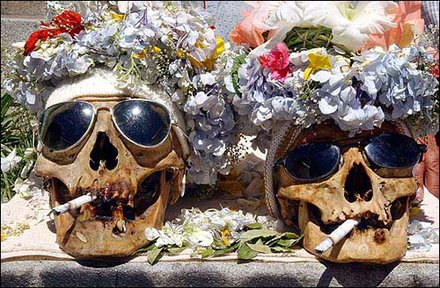New Year’s Day.
January 1. At the stroke of
midnight, many people – especially in the larger cities – gather in the streets
to wish people “Happy New Year!” People will celebrate with baking special
meals and sharing it with family and friends. Hotels and restaurants are often
booked well in advance.
Fiesta de la Virgen de Candelaria. February 2. A festival in honor of Mary, the
mother of Jesus; it’s an important holiday for Catholics. The core of this festival
is the dancing and musical performances that go on during the festival period.
The festival itself is actually held for a couple of weeks. There are special
masses held in honor of the festival, while costume-clad parades and
festivities are held throughout the Andean communities.
Good Friday. Varies.
All businesses and schools are closed, though you may find a few businesses
such as grocery stores open. No alcohol sales are allowed on this day. There
are special masses held on this day as well. Many people participate in the
tradition of eating fish (as their only meat) on Good Friday. Many people also
attend special masses held on Holy Saturday as well; one tradition is to push
five grains of wheat into some melted wax to symbolize the five wounds of Jesus
after being crucified on the cross.
Easter. Varies. Bolivians
often start their Easter morning with a sunrise mass. The Paschal candle, a
candle made of metal spikes similar to the spikes used in the crucifixion, is
carried in through the main doors of the church and is used to light all the
other candles. While it’s not a native tradition, the tradition of Easter eggs
and chocolate bunnies are starting to be found in areas of Bolivia in recent
years.
Labor Day. May 1. Bolivians
started celebrating Labor Day in 1906, and it was really important when the railroad
industry became popular and the railroad unions and miners unions were being
formed. The interesting thing is that most countries celebrate Labor Day on May
1 based on a labor dispute that went bad in Chicago, Illinois, USA (look up the Haymarket Riots) on that day.
However, the US celebrates Labor Day on the first Monday in September, which is
based on events that took place on that day in Canada.
Corpus Christi. Varies. Primarily celebrated by Catholic
church. It’s basically a holiday surrounding the practice and belief that the
body and blood of Jesus Christ is present at the Eucharist (or Holy Communion).
At the end of the Mass that is held this day, there is a procession through the
streets of the Blessed Sacrament.
Andean-Amazonic New Year.
June 21. Coordinating with their winter solstice, it’s also called
Aymara New Year. The native societies here were based on agriculture, and their
agricultural rituals were highly important to thank the gods, especially that of
Pachamama (Mother Earth) and Inti (Father Sun). If you remember, the sun on the
Argentinian flag is based on Inti. Every single business must close for this
day. And if a business does work, it will be fined and must pay its workers
double for their work. Wow.
Agrarian Reform Day.
August 2. In commemoration of the Agrarian Reform of 1953. This is
basically the reform act that redistributed land so that the indigenous peoples
of Bolivia could also have the opportunity to own land. This basically broke up
the pre-colonial land organization that had been established for decades and
centuries.
Independence Day. August
6. This day celebrates Bolivia’s independence from Spain in 1825. Celebrations
usually last two days, and there are parades, street festivals and dances,
music, food, and cultural events. The flag is hung and the national colors decorate homes and businesses throughout the country.
All Saints Day.
November 1. This is the day in the Catholic religion that celebrates all
the saints. Many saints have their own day, but this day celebrates all of the
saints – like a catch-all for the ones not lucky enough to get their own day.
It’s also a day in preparation to heading to the cemetery for the next day,
called Dia de los Muertos (Day of the Dead). People will use this day as a day
to do maintenance on their family member’s graves and leave fresh flowers.
There will also be vendors selling a special type of sweetbread called
tantawawas. There will also be special masses held.
Christmas Day.
December 25. Christmas Eve is celebrated with family and is usually
spent going to church services. These services start at midnight and usually go
to the wee hours of the morning. People
will return home to open presents and share elaborate meals together. Many families have the tradition of putting
out nativity scenes. There is also a tradition that children put out shoes and
stockings to receive gives from El Niño Jesus.
Up next: Art and Literature





No comments:
Post a Comment